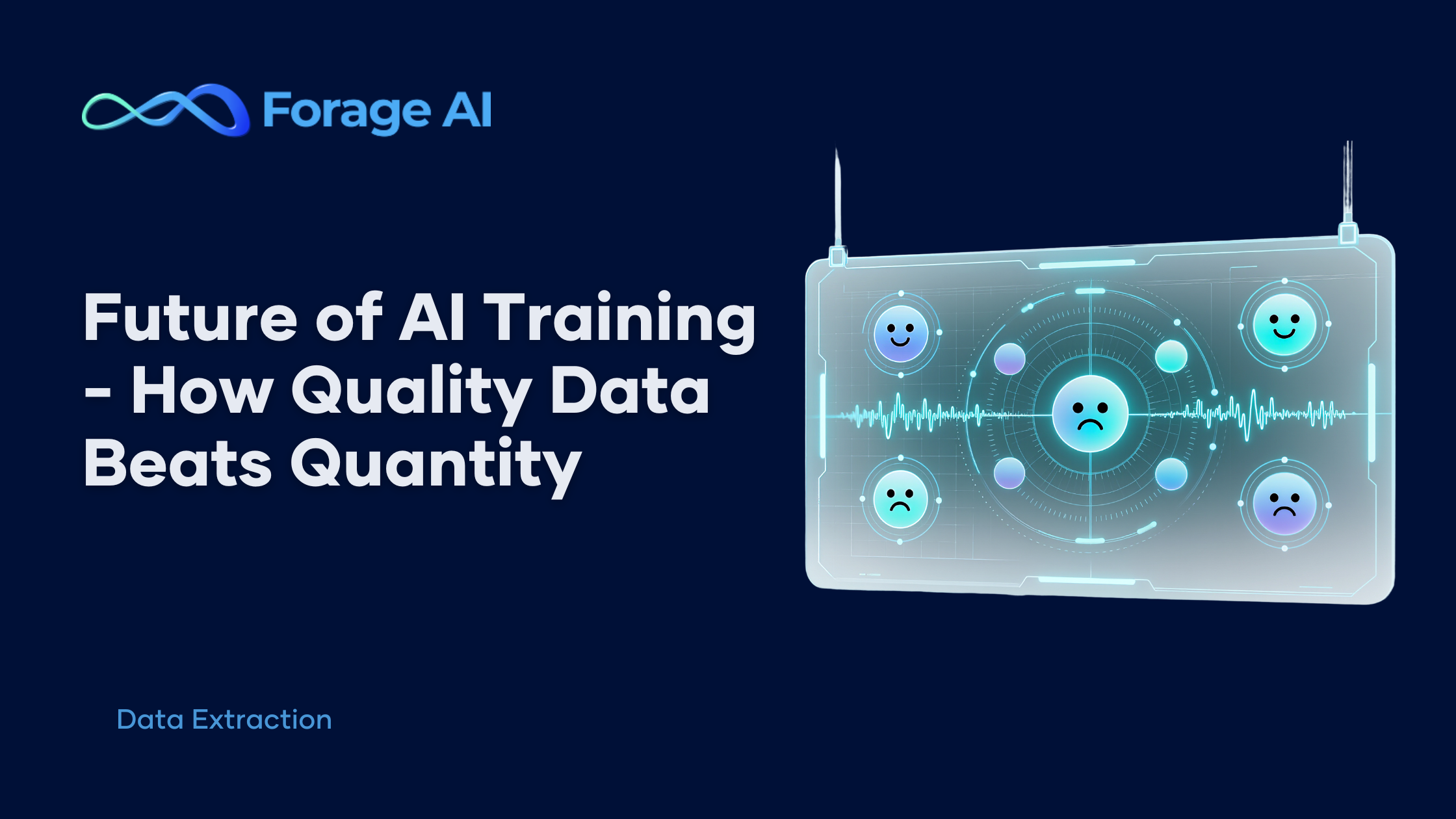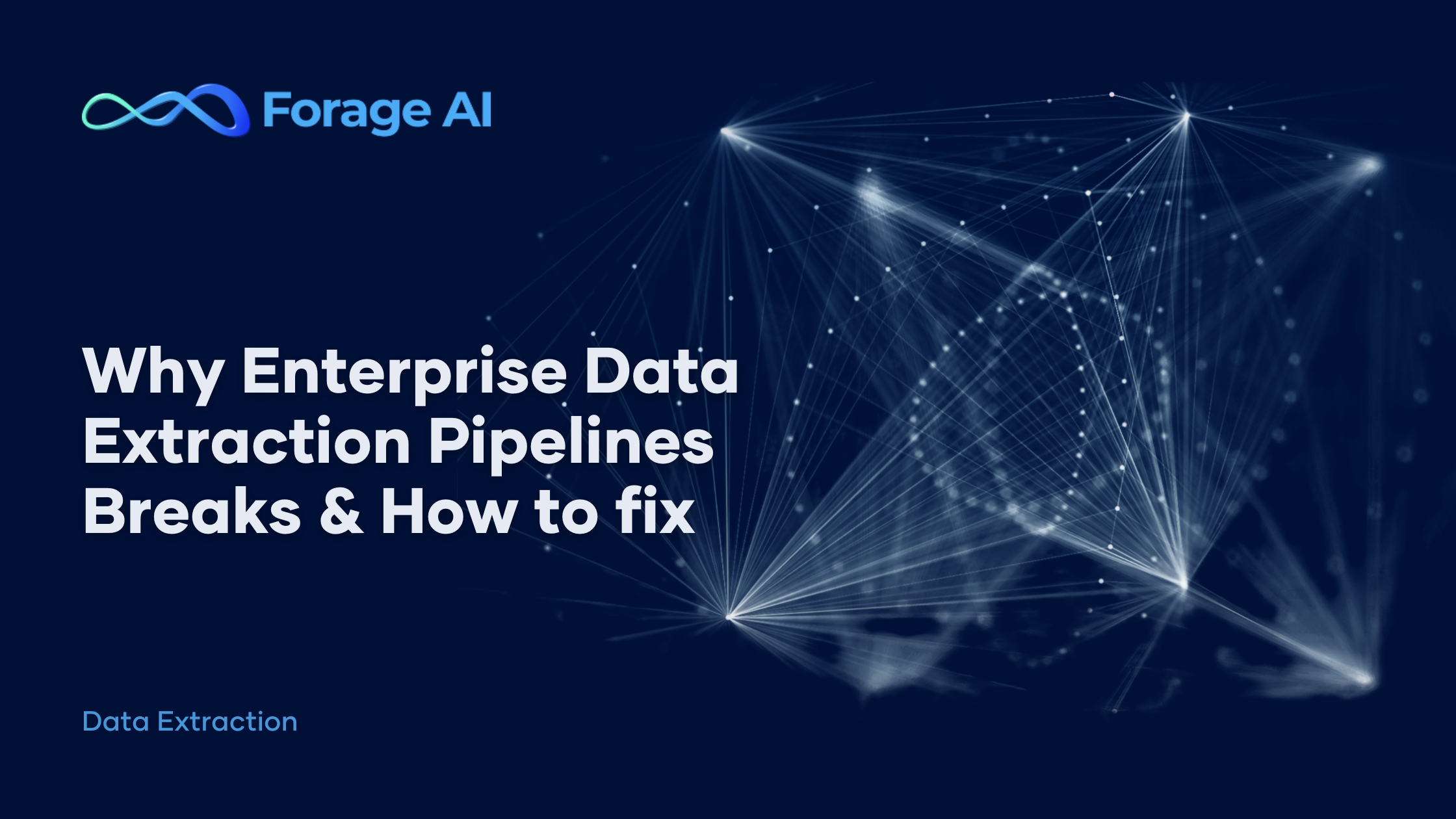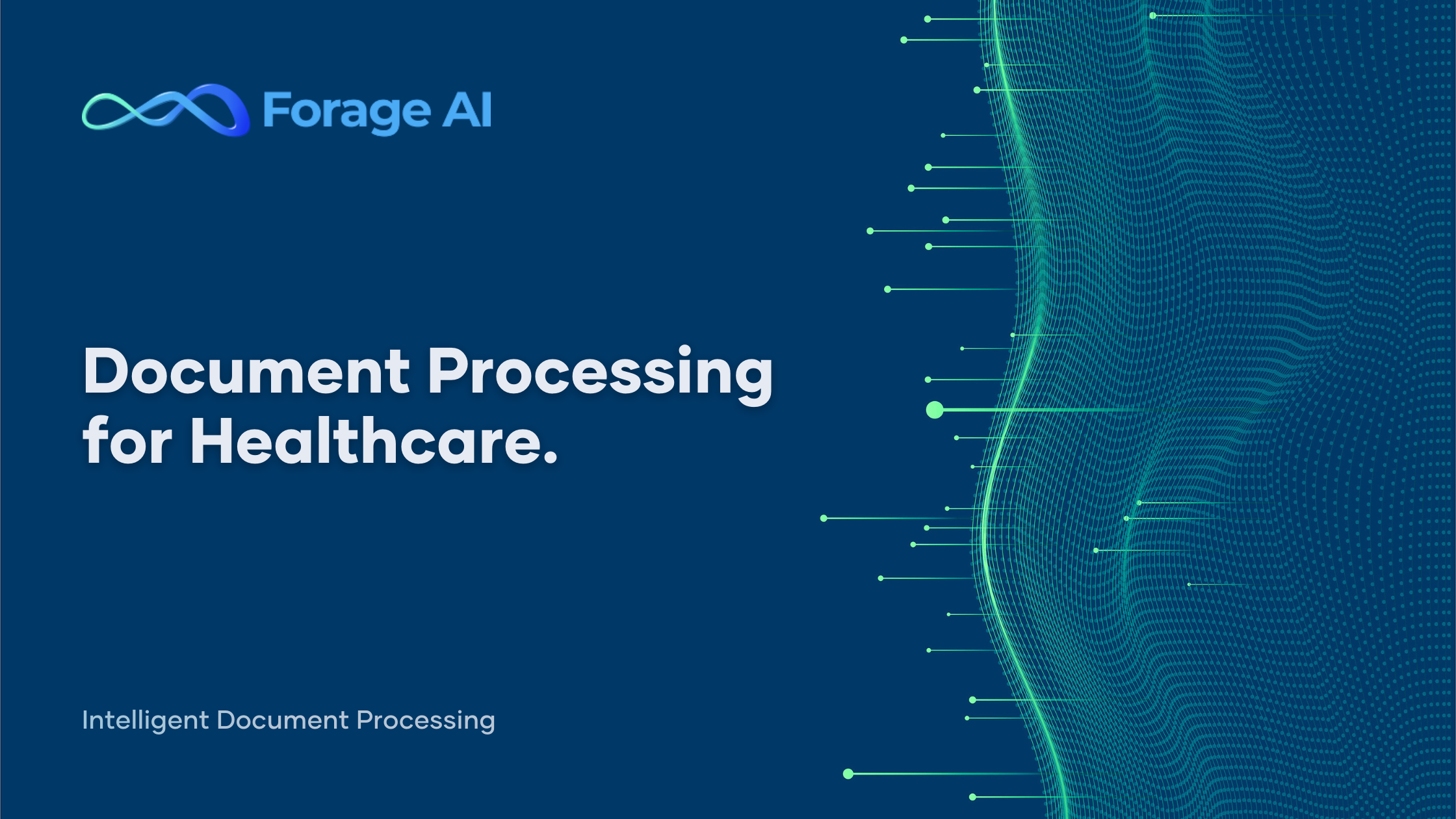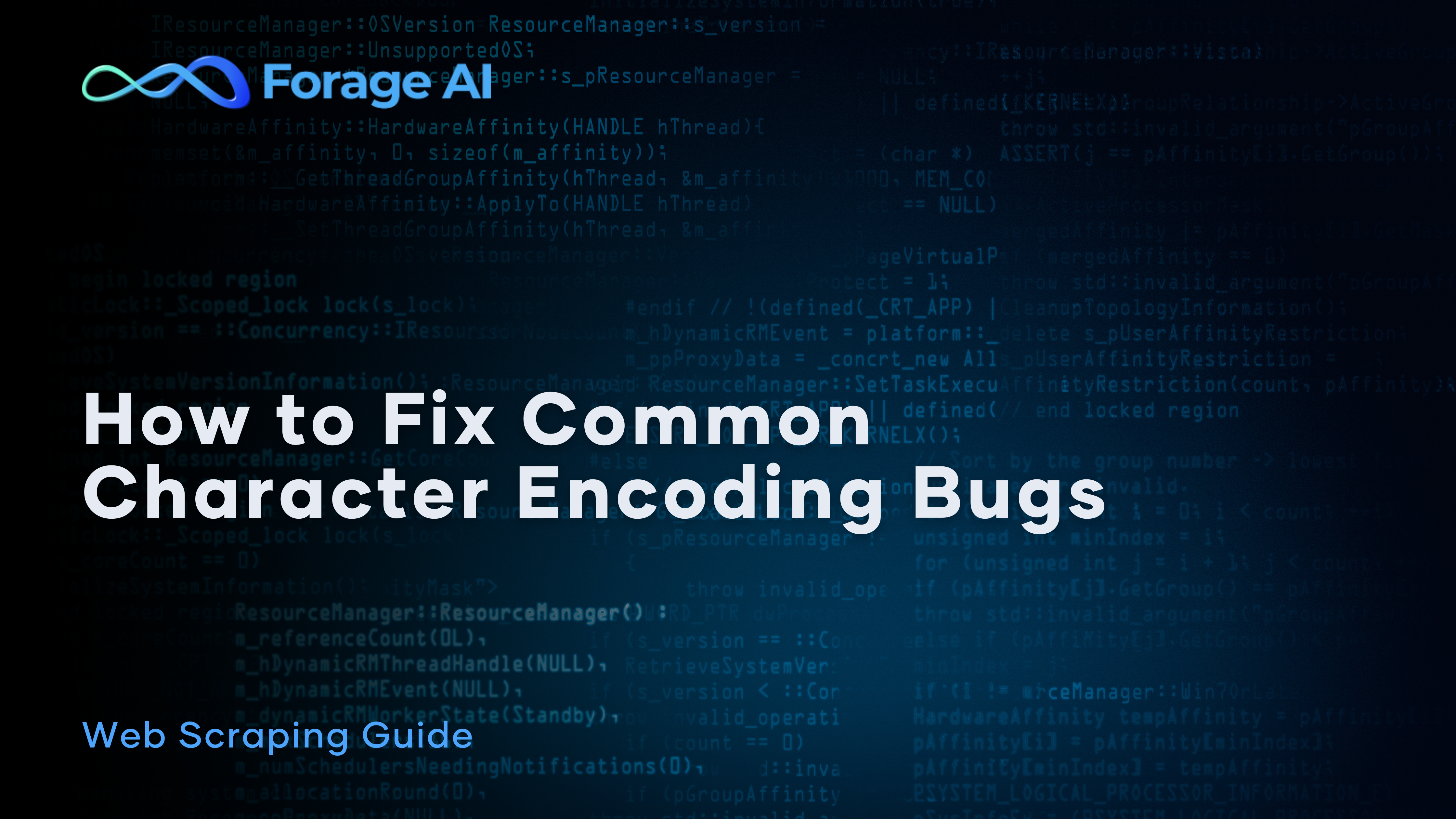Ever checked a competitor’s pricing and realized you’re charging way too much—or leaving money on the table? In today’s digital marketplace, pricing isn’t just a number—it’s a strategy that can make or break your business.
Did you know that 72% of adults in North America pull out their smartphones to compare prices while shopping in-store? It’s the #1 type of research done on mobile devices. When customers can compare prices instantly, staying competitive means not just setting the right price but knowing exactly when and how to adjust it.
This is where real-time price monitoring through web scraping becomes your secret weapon. Instead of flying blind with outdated information, you gain a comprehensive view of the market landscape, letting you make confident pricing decisions that protect margins while keeping you competitive.
Ready to outpace your competition? Let’s explore how modern e-commerce businesses use web data extraction to optimize pricing, spot market shifts, and inform product strategy—all while avoiding common pitfalls that can derail your efforts.
Why Price Intelligence Matters in Today’s Market
Think about it—pricing affects everything from your conversion rates to how customers perceive your brand. As e-commerce continues to evolve, price transparency works both ways: customers can easily compare options, but data-savvy companies can turn this transparency into an advantage.
The numbers speak volumes: 81% of shoppers research online before buying, with price comparison leading the list of reasons why. When you implement effective price monitoring, you can:
- Respond quickly to market changes instead of adjusting prices reactively days later.
- Protect your brand value by spotting unauthorized sellers who violate your pricing policies.
- Time your promotions strategically by understanding competitive discount patterns.
- Make smarter product decisions based on how features and prices align across the market.
Staying blind to price dynamics is like playing poker without seeing your cards—you might win occasionally through luck, but you’ll lose consistently to players with better information. Why guess when you can know?
Now that you understand why price monitoring is essential for your business, let’s look at how this technology has evolved to meet today’s demanding market requirements. The tools available today are light-years ahead of traditional methods—giving you capabilities that were once available only to retail giants.
The Evolution of Data Extraction: Traditional to Modern
Remember the old days of price monitoring? Teams would manually visit competitor websites, copy information into spreadsheets, and analyze it once a week or month. Talk about tedious—and by the time you had insights, they were already outdated!
Then, digital transformation changed everything. As online competition intensified, businesses needed faster, more comprehensive market data. This necessity drove innovations that transformed how we track competitive information:
- From manual visits to automated collection from hundreds of sources simultaneously.
- From weekly snapshots to near real-time updates as prices change.
- From inconsistent formats to structured, analysis-ready data.
- From limited local monitoring to global market visibility.
Today’s solutions leverage AI and machine learning to maintain accuracy even as websites constantly change. The scope has expanded too—modern platforms monitor millions of sites, tracking not just products and prices but also regulatory changes, job listings, social profiles, and more.
This evolution means even smaller businesses can now access enterprise-grade market intelligence that was once reserved for retail giants with massive research departments. The playing field has leveled—if you know how to leverage these tools.
So, we’ve established why price intelligence matters and how it’s evolved—but exactly how does modern web scraping transform this raw data into competitive advantage? Let’s pull back the curtain and show you the mechanics behind automated price monitoring that delivers results.
How Web Scraping Powers E-commerce Price Monitoring
Imagine having an army of digital scouts that never sleep, tirelessly scanning every competitor’s website 24/7, instantly alerting you when a price drops or a new promotion launches. That’s web scraping in action—your advantage in the pricing intelligence game.
While your competitors might check a handful of products manually each week, your automated system continuously monitors thousands of products across hundreds of websites, capturing:
- Product details (names, categories, specifications).
- Pricing information (current price, discounts, historical prices).
- Availability and stock status.
- Shipping costs and delivery estimates.
- Return policies and seller ratings.
- Product variants and options.
But here’s where the magic happens: powerful systems don’t just dump raw data in your lap. They transform this firehose of information into clear, actionable insights. You’ll spot pricing trends, competitive threats, and market opportunities that would remain invisible with manual methods.
And yes, this happens ethically—respecting legal standards like GDPR and CCPA by targeting only public data, maintaining reasonable request limits, and following responsible data practices. You get the competitive edge without the compliance headaches.
You’ve seen how web scraping works in theory—but how does this translate into tangible business results? Let’s move from mechanics to meaningful applications by exploring the specific ways companies are using price monitoring to drive growth and outpace competitors.
Core Use Cases of Price Monitoring
Let’s look at how businesses actually use this information to drive results. Rather than just theoretical benefits, these are practical applications that deliver measurable ROI.
Dynamic Pricing for Competitive Advantage
The Problem: Static pricing means you’re either leaving money on the table or pricing yourself out of consideration.
The Solution: Track competitor prices in real time and adjust your own strategically.
Real Impact:
- Raise prices when competitors are out of stock or priced higher.
- Lower prices selectively when needed to win key customers.
- Companies using dynamic pricing report 5-25% revenue increases depending on their market.
Promotional Intelligence & Discount Strategies
The Problem: Your competitor launches a flash sale and steals your customers before you can respond.
The Solution: Monitor promotional activities across competitors to anticipate market shifts.
Real Impact:
- Spot a competitor launching back-to-school discounts early? Accelerate your campaign timeline.
- Notice certain products frequently discounted? Adjust your inventory and marketing focus.
- Promotional intelligence lets you play offense instead of defense in seasonal campaigns.
Brand Compliance & MAP Monitoring
The Problem: Unauthorized sellers undercut your prices, damaging relationships with authorized partners.
The Solution: Automatically detect Minimum Advertised Price (MAP) violations across all channels.
Real Impact:
- Identify violations within hours instead of days or weeks.
- Protect brand value by maintaining price consistency.
- Preserve channel relationships by ensuring all sellers compete fairly.
Stock/Availability Intelligence
The Problem: Missing opportunities when competitors can’t fulfill demand.
The Solution: Track competitor stock levels and availability patterns.
Real Impact:
- When a popular product goes out of stock elsewhere, feature yours prominently.
- Potentially increase prices when you’re the only seller with inventory.
- Forecast demand fluctuations by analyzing competitor inventory patterns.
Catalog Optimization
The Problem: Your product listings lack compelling elements that drive conversions.
The Solution: Analyze how top-performing competitors present similar products.
Real Impact:
- Highlight features competitors don’t emphasize.
- Address information gaps that create purchase barriers.
- Improve conversion rates by optimizing your product presentation.
Targeted Advertising
The Problem: Marketing budget wasted on non-competitive products or ineffective messaging.
The Solution: Focus campaigns on your strongest competitive positions.
Real Impact:
- Allocate budget to products where you have a price or availability advantage.
- Craft messaging that highlights your competitive strengths.
- Increase advertising ROI by targeting your most winnable customers.
These use cases demonstrate the immediate tactical benefits of price monitoring—but the strategic implications go even deeper. By combining price data with other market signals, you can unlock insights that inform your entire product strategy. Let’s explore how price intelligence can transform your approach to product development.
Product Demand Analysis: Beyond Basic Price Tracking
Price monitoring reveals more than just what things cost—it offers a window into market demand and product positioning. By combining price data with other market signals, you gain deeper strategic insights:
- Which features command premium prices and which don’t move the needle?
- Where are the gaps in competitors’ product lines that you could fill?
- How do customers really value different aspects of your products?
For example, if you notice a competitor’s basic model priced at $99 sells out constantly while their feature-rich $199 version sits in stock, that tells you something valuable about what customers in that category actually value. This intelligence helps you develop products that match market demand instead of just your internal assumptions.
Product teams can use this data to make better-informed decisions about:
- Which features to prioritize in development
- How to bundle products or services
- Where to position new offerings in the market
- When to refresh or retire existing products
This approach transforms price monitoring from a tactical tool to a strategic asset that influences your entire product lifecycle.
We’ve covered the substantial benefits of price monitoring—from tactical advantages to strategic insights. But before you dive in, you should be aware of the common obstacles that trip up many organizations. Understanding these challenges upfront will help you avoid costly mistakes and implement a solution that delivers reliable results from day one.
Challenges in E-commerce Price Monitoring
Now that you’ve seen the powerful benefits of price monitoring, you’re probably eager to get started. But first, let’s address the obstacles you’ll face. This isn’t as simple as installing a free plugin and watching the data roll in. Here’s what you’ll need to overcome:
Dealing with Constantly Changing Websites
Just got your scraper working perfectly? Wait until next week when your competitor redesigns their site. Retailers update their layouts frequently, breaking basic scrapers overnight. Advanced solutions use AI to automatically adapt to these changes, ensuring your data keeps flowing even when websites transform completely.
Getting Past Anti-Bot Defenses
E-commerce sites are fighting back with sophisticated anti-scraping technologies. CAPTCHAs, IP blocking, and browser fingerprinting can stop amateur scraping attempts cold. Overcoming these barriers requires rotating proxies and advanced browser emulation that legitimate data partners have already mastered.
Matching Products Accurately
Is “Apple iPhone 14 Pro Max 256GB Graphite Unlocked” the same as “iPhone 14 Pro Max 256GB – Graphite (Unlocked)”? To humans, obviously yes. To computers, they’re completely different products. Without sophisticated matching algorithms, you risk comparing entirely different items or missing matching products altogether.
Managing Resource Requirements
That scraper you built might work for 10 products on 3 websites. But what about 10,000 products across 300 sites? Building and maintaining in-house scraping infrastructure at scale demands significant investment in development, servers, and ongoing maintenance as websites evolve.
Navigating Legal Considerations
While collecting public data is generally acceptable, it must be done responsibly. Reckless scraping can violate terms of service or data protection regulations. Professional solutions respect website limitations, observe rate limits, and follow ethical data practices to keep you compliant.
These real-world challenges explain why many organizations—even technically sophisticated ones—often partner with specialized data providers rather than trying to build everything in-house.
Now that you’re aware of both the opportunities and obstacles, it’s time to make a critical decision: should you build your own price monitoring system or partner with a specialized provider? The right choice depends on your specific situation—let’s examine the options.
Building or Buying a Price Monitoring System
When implementing price monitoring, you have three main options:
In-House Development
Pros:
- Complete customization to your specific needs.
- Direct integration with internal systems.
- Full control over data collection and storage.
Cons:
- Requires specialized development expertise.
- Significant ongoing maintenance as websites change.
- High total cost of ownership (often underestimated initially).
This approach makes sense if you have unique requirements that off-the-shelf solutions can’t address and sufficient technical resources to build and maintain a robust system.
Third-Party Solutions from Experienced Web Data Providers
Pros:
- Faster implementation with proven technology.
- Broader market coverage across thousands of sources.
- Ongoing updates and improvements handled for you.
- Lower risk of data interruptions or quality issues.
Cons:
- Less customization than fully bespoke solutions.
- Monthly subscription costs (though often lower than DIY total cost).
For most organizations, partnering with a specialized provider like Forage AI delivers the best balance of quality, cost, and time-to-value. Our solutions offer:
- Custom extractions tailored to your specific needs with flexible delivery formats.
- 1000+ ready-to-use datasets sourced from major e-commerce platforms.
- Comprehensive coverage across hundreds of millions of websites.
- Enterprise-grade accuracy and reliability.
Hybrid Approach
Many companies take a middle path—using external data feeds while building custom analytics and integration layers internally. This approach combines reliable data collection with tailored analysis capabilities.
The right choice depends on your technical resources, budget, and how central price intelligence is to your competitive strategy. Companies that view pricing as a critical differentiator often justify greater investment in sophisticated monitoring systems.
You’ve evaluated the options and chosen your approach—be it in-house, third-party, or hybrid. But how do you translate that decision into a working system that delivers measurable ROI? Let’s walk through a proven implementation roadmap that will set you up for success.
Implementing Price Monitoring Successfully
Now that you understand the options, how do you actually put price monitoring into practice? A successful implementation typically follows these steps:
1. Build a Cross-Functional Team
Price monitoring impacts multiple departments—bring together people from merchandising, marketing, analytics, and technology to ensure all perspectives are considered. This collaborative approach drives broader adoption and more creative applications of the data.
2. Define Clear Success Metrics
What specific outcomes do you want to achieve? Whether it’s margin improvement, conversion rate increases, or faster competitive response times, establish measurable KPIs aligned with your business objectives.
3. Start With a Focused Pilot
Rather than boiling the ocean, select a high-impact product category for initial monitoring. This targeted approach demonstrates value quickly while refining your processes before wider deployment.
4. Integrate Insights Into Workflows
Price intelligence only creates value when it drives decisions. Connect your data to existing decision processes—whether through dashboards, pricing tools, or regular reporting mechanisms.
5. Expand Methodically
As your pilot demonstrates ROI, systematically extend monitoring to additional product categories, competitors, or markets while maintaining data quality standards.
6. Continuously Improve
Regularly evaluate whether the insights are driving better outcomes and refine your approach based on feedback and evolving business needs.
Organizations that follow this structured approach see faster returns and build sustainable competitive advantages through superior market intelligence.
Conclusion: Price Intelligence as a Competitive Necessity
Price monitoring has evolved from a nice-to-have to a must-have competitive tool. In a world where 81% of consumers research before buying, flying blind on pricing is no longer an option.
The evidence is clear: companies leveraging price intelligence consistently outperform competitors relying on intuition or manual monitoring.
The good news? You don’t need an enterprise budget to implement effective price monitoring. With the right approach, businesses of any size can access insights once reserved for retail giants.
Contact Forage AI to discover how our solutions can give you the competitive edge you need





